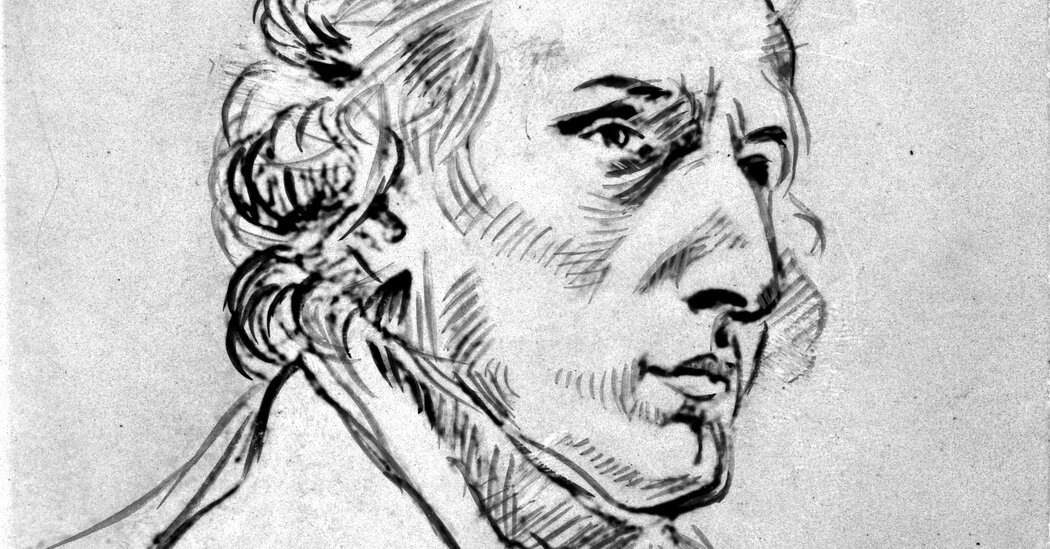Advertising
Supported by
By Jeremy Denk
When you purchase a rating independently on our site, we earn a partner fee.
CHASING CHOPINA Musical journey through three centuries, four countries and half a dozen revolutions through Annik LaFarge
Like many people, I learned very early in Chopin’s “Funeral March,” on the sofa in the family circle, watching the cartoons on Saturday morning. Cartoons, like fairy tales, require death as a tool of intrigue, but they need to deface it slightly. Chopin’s walk was a practical and cheesy shortcut, disturbing but comical, no more serious than the words “game over” at the end of a video game. Therefore, it is almost very unlikely for me to believe in a world in which the work is new and tragic, where its death is real.
Annik LaFarge’s re captivating and loving new ebook, “Chasing Chopin,” tries to reclaim this world. A mixture of biography, cultural observation and non-public reflection emanates from the “Funeral March”, the third movement of Chopin’s Piano Sonata No. 2, in various directions. In retrospect, LaFarge describes the composer’s loves and pianos (often the same); explores his writing, his fingerings, his Polish identity. But he also turns to the present, consulting budding pianists, the government of the old functionality already Zibi, the author of the video game “Frédéric: The Resurrection of Music”. For an e-book on death, it’s full of life and animated research. LaFarge writes passionately about Bach’s influence on Chopin and the virtues of listening to pianos of the time to discover what Chopin heard and imagined.
“Chasing Chopin” is just a partial biography, with much of its concentration on Chopin and George Sand’s strange celebrity partner: tuber composer, writer who dubbs the genre. His dating was a constantly revised arrangement, a forged support criterion, a precursor of groups and friends with benefits. LaFarge combines this fashionable lifestyle with the revolutionary quality of her work. It highlights the couple’s tumultuous beginnings, adding an epic letter in which Sand outlines “a vision of ideal love that avoids ‘the bonds of everyday life’ and fosters a true relationship of a couple founded on ‘a chaste pastime and sweet poetry'”. A week later, Sand adjusts his brain: the appointment is consumed. After about a year, he replaced his brain and they have become platonic lovers. Sand’s interactions with Chopin take on facets of motherhood, facilitation and breastfeeding, which is not unusual when you go out with an artist (ask one of my exes!). Finally, they argue, and LaFarge makes you feel the decline of these preferably fashionable quotes, perhaps even more than Chopin’s near physical decline.
Towards the beginning, LaFarge, that of an ebook on High Line and an amateur pianist, admits that the motivation of “Chasing Chopin” was a representation of the “Funeral March”, and in particular a striking contrast: between the dark main theme of March and a dazzling primary segment that comes next. She describes this segment of the medium as an “unbridled joy … smuggled into the center of a death march.” She continues: “It seemed ambitious, but also fundamentally true, that our delight in death was animated and not obsessed by a force of beauty. Life.”
It’s hard to discuss such a private interpretation, and I like the word “contraband,” but there are other tactics for interpreting that contrast. It’s not so much what Chopin does, it’s what he doesn’t do. Chopin an incomparable craftsman of transitions, and enjoyed the asymmetry, however, his “Funeral March” has almost no transitions, and ascends by two and four symmetrical. The form is static and ritualized. The minor march and its main antidote look at each other through sectional, socially estranged jumps, unable to intertwine.
This eBook took me to many unforeseen corners; occasionally I would have liked LaFarge to take more time to explore the nooks and crannies he discovered. Above all, I would have liked her to devote more time to the rest of the walk, the last component of the wonderful sonata, epilogue to a funeral. This motion is a primary presented to each and every convention. There are no melodies, few variations, no transparent drama: a minute of silent unished running through your hands, forming and reforming in the dark. People have fought for a long time to describe their perverse genius. “Night winds sweep the graves of the cemetery” through Anton Rubinstein is the most prominent image, but it is too exuberant and evocative, too Halloween. LaFarge cites Chopin’s description: The two hands “chat in unenoon.” This touch of bitterness and contempt is closer to the brand. You can believe the proud Chopin, faced with sickness and death every day, refusing to give other people or even himself the triumph they dream of, or a simple answer, or any answer. When you hear the song in concert, and the last minute comes to an end, it’s wrong to applaud. You feel Chopin needs your discomfort. The public hesitates, as if the questions we are asking ourselves are being asked, day after day of quarantine: is it over? Now what?
Advertising

